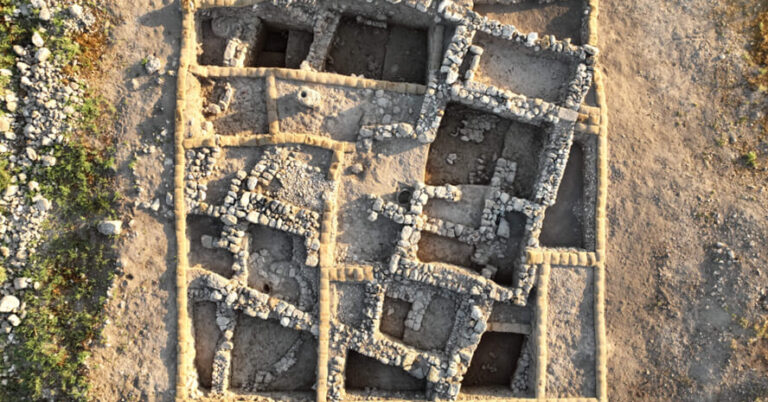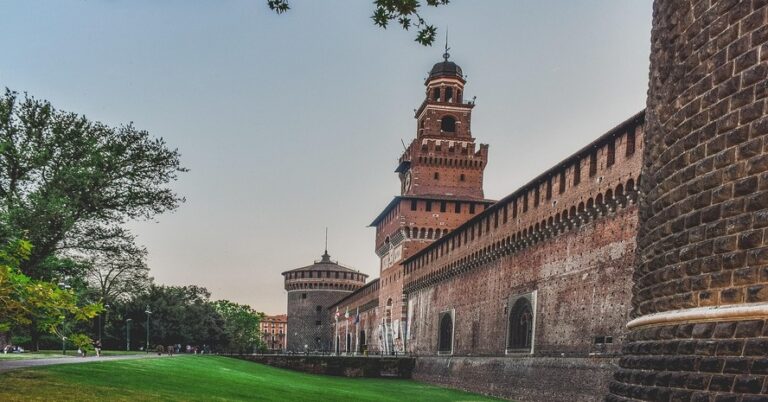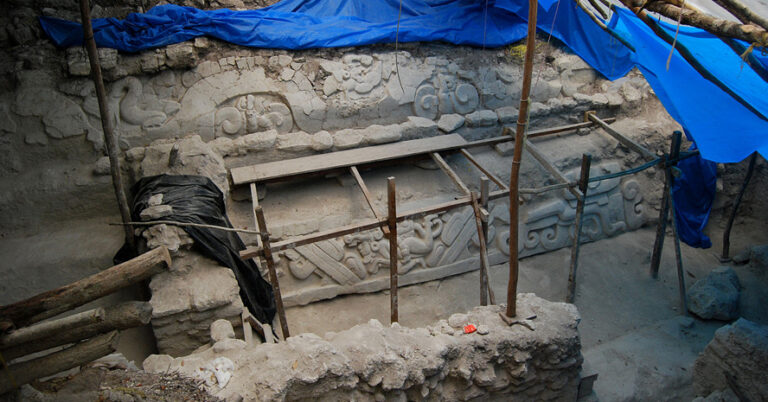Sixty-six million years ago, a world-ending collision sent shockwaves across the Earth—literally. When the asteroid that killed the dinosaurs slammed into what is now the Yucatán Peninsula, it reshaped the planet in an instant. The Chicxulub impact crater is one of the most studied geological formations in the world, yet it continues to reveal new and shocking secrets. One of the latest discoveries? 52-foot-tall underground ripples buried beneath ancient sediment, a frozen-in-time record of the cataclysmic tsunami that followed.
These massive ripples aren’t just scars of a disaster—they are evidence of an asteroid impact so powerful it set off an Earth-shaking sequence of events. But what was it really like in the moments, hours, and days following that impact? What would it have felt like to stand on the shore, watching an ocean suddenly sucked backward before an apocalyptic wave surged forward?
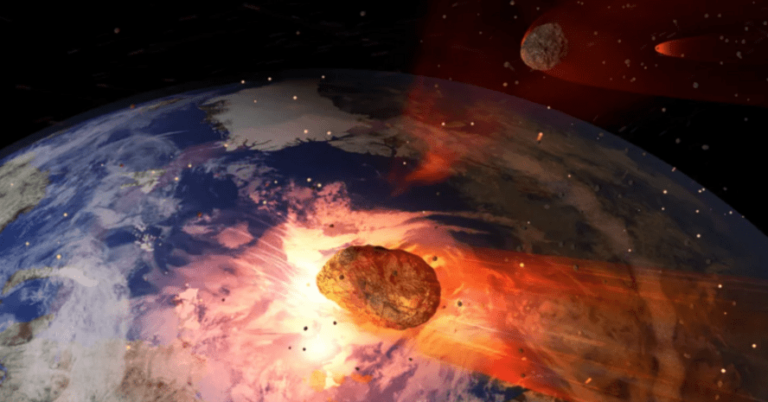
The Asteroid’s First Moments: An Unimaginable Explosion
Imagine standing on the shores of an ancient ocean, 66 million years ago. The air is thick with humidity, the calls of distant dinosaurs echo through the forests, and the water glistens under a warm, Cretaceous sun. Then, a streak of white-hot fire tears through the sky.
The asteroid that killed the dinosaurs wasn’t just falling—it was screaming toward Earth at an estimated 45,000 mph, faster than any bullet ever fired. Within seconds, it punched through the atmosphere, compressing the air in front of it until it became hotter than the sun’s surface. If there had been any creatures looking up at that moment, they wouldn’t have had time to react—the sheer thermal radiation from the asteroid’s descent alone would have set fires on the ground before impact.
This would have been especially intense around the impact site and its vicinity, though the fires could have spread over a larger area depending on atmospheric conditions.
Then, the collision.
The Chicxulub impact crater was born in an instant. The asteroid struck near what is now Mexico’s Yucatán Peninsula, delivering a force equivalent to 10 billion Hiroshima bombs. The shockwave tore through land and sea, sending seismic waves from the asteroid impact rippling across the planet. The ground didn’t just shake—it liquefied in places, behaving more like water than solid earth.
At ground zero, everything vaporized. The impact unleashed temperatures hotter than lava, turning rock into gas and sending superheated debris hurtling back into the sky. As these molten fragments rained down across the globe, they ignited wildfires thousands of miles away. Ash and dust choked the atmosphere, plunging the world into darkness.
But it wasn’t just land that felt the blow—the ocean had its own violent reaction. Within minutes, seawater rushed into the massive crater, only to be violently thrown back out, triggering a tsunami believed to be more than a mile high. The waves surged outward at highway speeds, reshaping coastlines and carving 52-foot-tall underground ripples into the ocean floor, a silent record of the chaos.
Meanwhile, the Earth itself rang like a bell. The seismic waves from the asteroid didn’t just stop at the impact zone—they traveled through the planet, bouncing and reverberating. Some estimates suggest that the ground tremors may have triggered volcanic eruptions halfway across the world, further contributing to the mass extinction that followed.
In just a few terrifying minutes, life on Earth had changed forever. But the true consequences—the darkness, the acid rain, the starvation—were only beginning. The asteroid may have been a single event, but its impact set off a chain reaction that would last for years, ultimately wiping out three-quarters of all life on Earth.
And yet, despite this destruction, the Earth remembers. The crater, the buried ripples, the layers of iridium-rich rock—each is a fossilized echo of that fateful moment, still waiting to be uncovered.
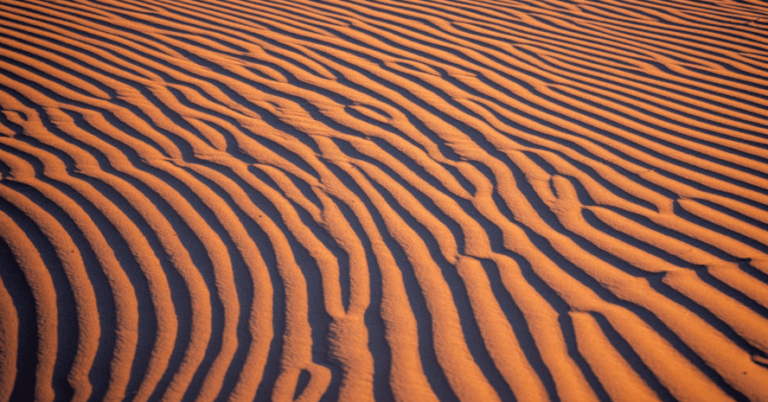
The Giant Tsunami That Carved the Ocean Floor
Tsunamis today are devastating, but the one caused by the dinosaur extinction event was beyond anything modern humans have witnessed. Scientists estimate the first wave to have been over a mile high near the impact site. The energy displaced water so violently that ocean currents formed towering ripples—each standing 52 feet tall and spaced nearly half a mile apart—on the seafloor.
Buried beneath layers of sediment off the coast of modern-day Louisiana, these ripple structures remained hidden for millions of years. Only recently have geologists uncovered them, revealing a hauntingly precise snapshot of the event.
But what’s even more eerie? Unlike most tsunami-generated ripples, these have remained intact for 66 million years. Normally, ocean currents would erode such features over time, but these were quickly buried, preserving them like footprints in wet cement.
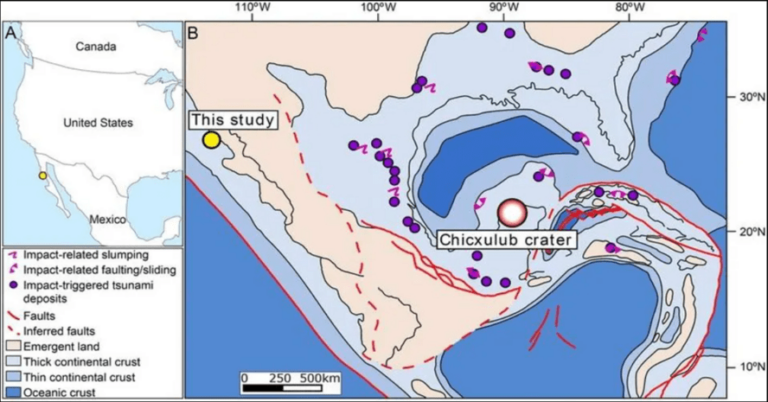
The Scientists Who Uncovered the Ancient Ripples
The discovery of the 52-foot-tall underground ripples wasn’t just a lucky find—it was the result of meticulous research and cutting-edge geological technology. A team of scientists, led by Professor Gary Kinsland, a geophysicist from the University of Louisiana at Lafayette, made the breakthrough while analyzing seismic data from deep beneath the Gulf of Mexico.
Kinsland and his colleagues weren’t originally looking for evidence of the asteroid that killed the dinosaurs. They were studying ancient sediment layers for clues about prehistoric climates when they stumbled upon something strange—an unusually consistent pattern of massive ripples, each spaced nearly half a mile apart. These formations were buried more than 5,000 feet below the surface, yet they were so well-preserved that they clearly showed signs of a violent, sudden event.
Using seismic imaging, a technique similar to an ultrasound for the Earth, the team mapped out the ripples and traced their origin back 66 million years to the Chicxulub impact crater. The size and shape of the ripples matched those caused by powerful tsunami waves—only these were far larger than any seen before.
Kinsland and his team published their findings in the journal Earth and Planetary Science Letters, adding yet another piece to the puzzle of the dinosaur extinction event. Their research suggests that these ripples were created within hours of the impact, as seismic waves from the asteroid shook the planet and an apocalyptic tsunami surged outward.
What makes this discovery so significant is its remarkable preservation. Normally, ocean currents would erode such structures over time, but these were buried almost immediately by layers of sediment. This means they serve as a perfectly frozen moment in time, offering scientists a clearer look at what happened in the chaotic aftermath of the impact.
The work of Kinsland and his team highlights an exciting truth about science: we’re still uncovering the full story of Earth’s past. The Chicxulub impact is one of the most studied events in history, yet discoveries like this show that there are still secrets hidden beneath our feet—waiting for someone to find them.
How These Ripples Connect Us to the Past
The discovery of these towering formations forces us to reconsider the immense scale of the Chicxulub impact crater. Standing at the edge of one of these ripples (if they weren’t buried deep underground), you’d feel dwarfed by their size, just as the creatures of the time must have felt when facing the tidal waves that formed them.
This isn’t just about ancient history—it’s about what’s still out there, hidden beneath our feet. The asteroid left more than just a crater; it altered the chemistry of the atmosphere, reshaped coastlines, and laid down layers of geological evidence waiting to be uncovered. Each new discovery, like these ripples, adds another piece to the puzzle of what life—and death—was like in the wake of that catastrophic day.
More Questions Than Answers
The ripples raise fascinating new questions: How quickly did the waves spread across the world’s oceans? What did the immediate aftermath look like for surviving species? Could similar structures be buried elsewhere, revealing even more about the dinosaur extinction event?
One thing is certain: The Earth remembers. And for those willing to dig deep enough, it continues to whisper its secrets, one buried ripple at a time.


